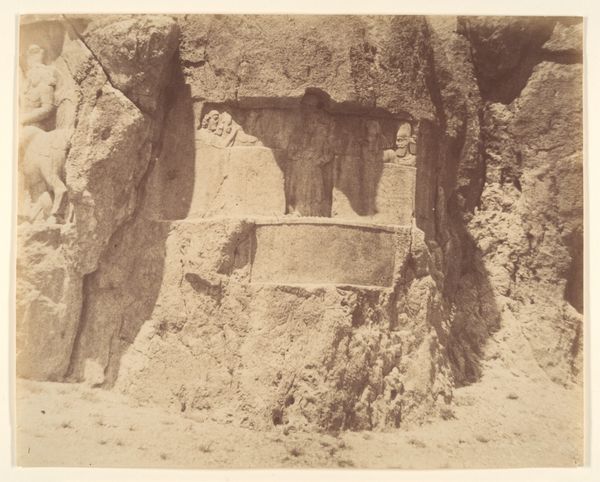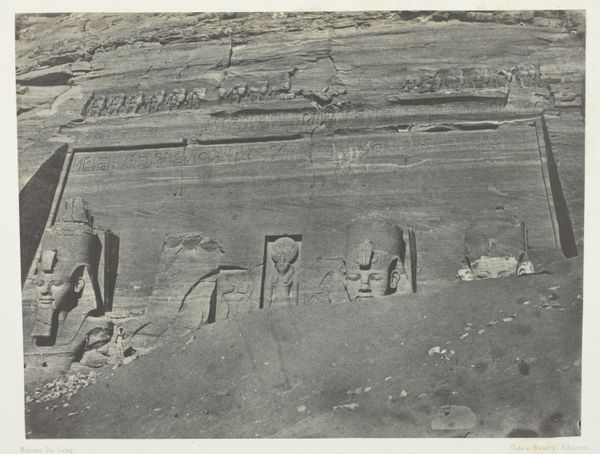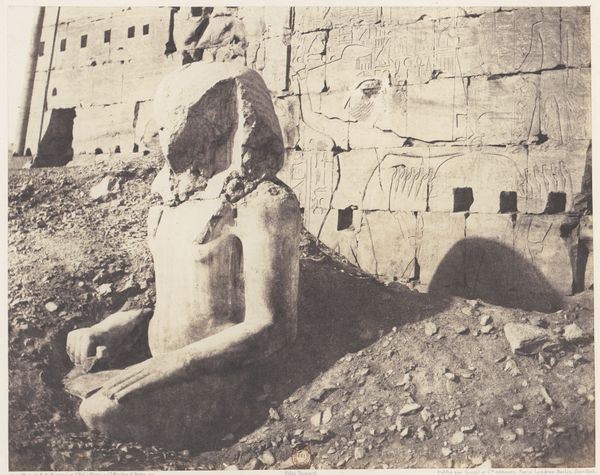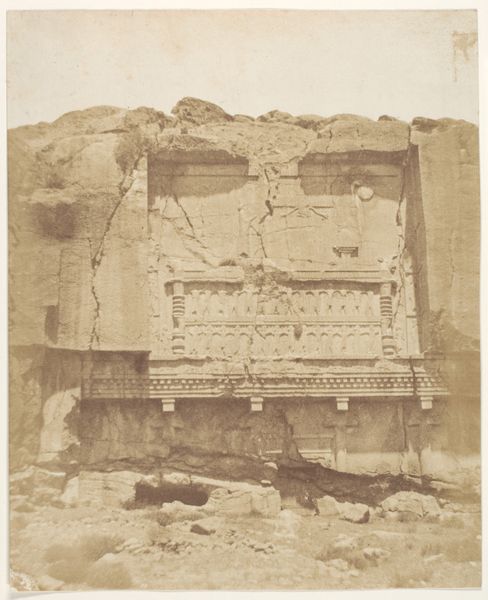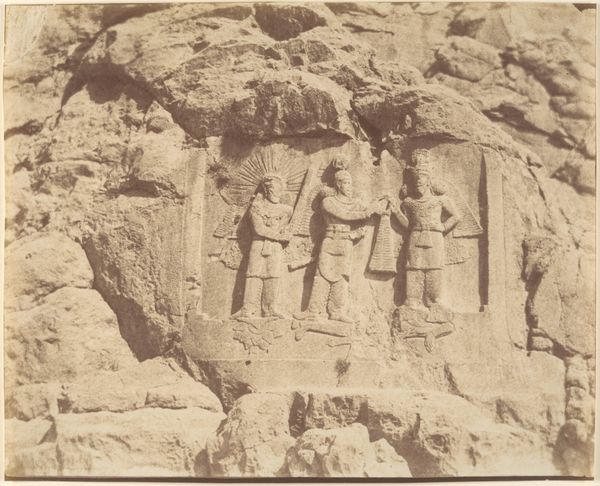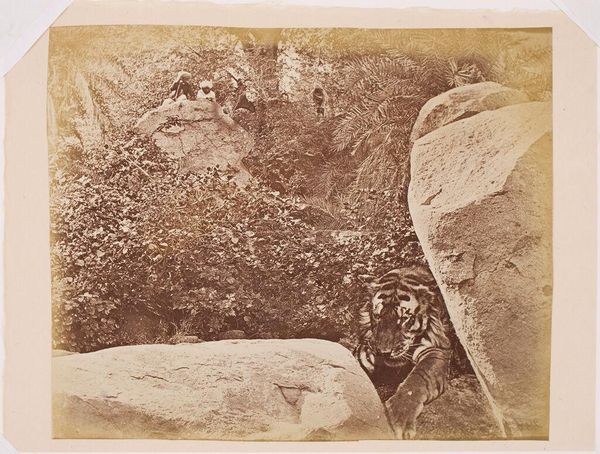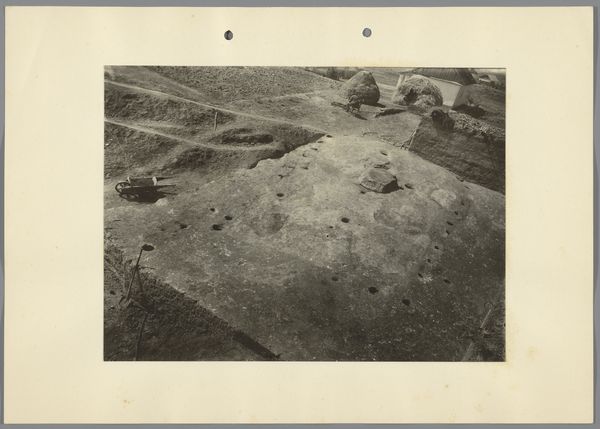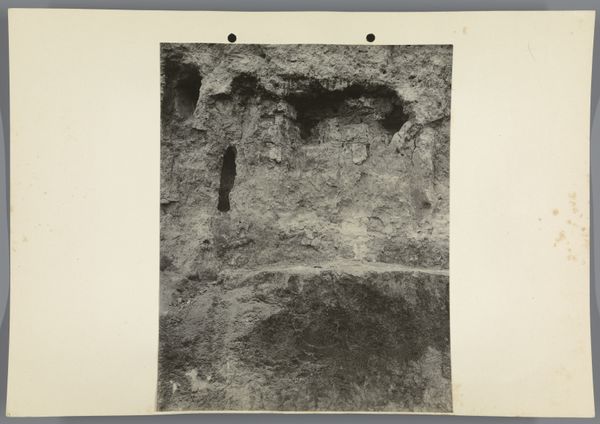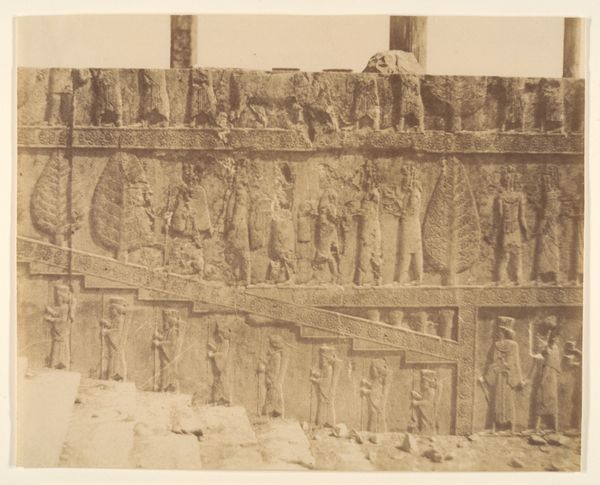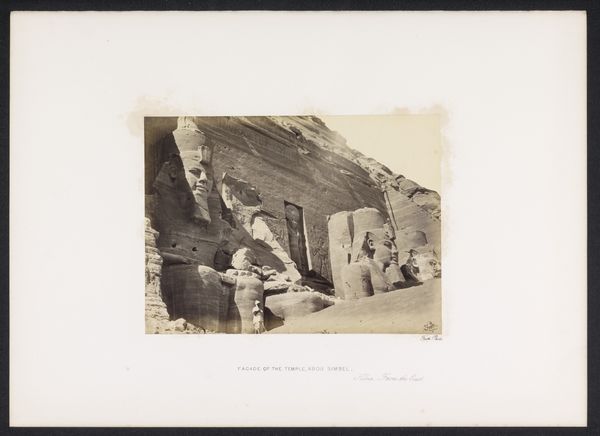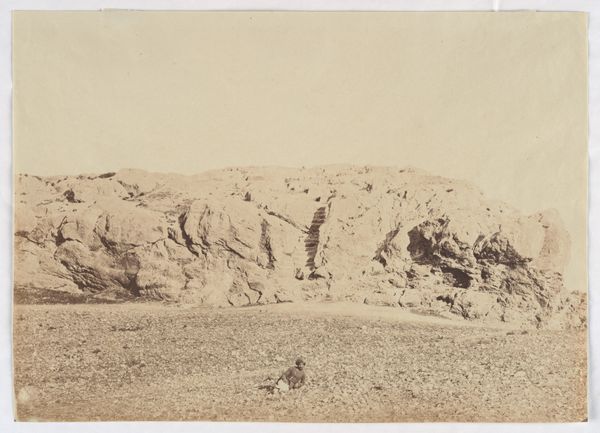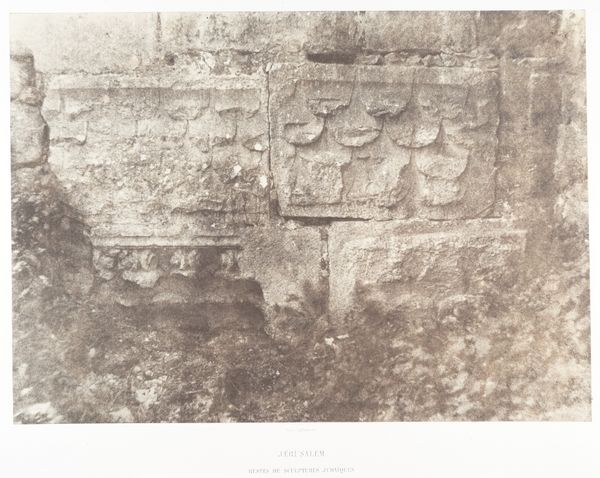![(4) [Naksh-i Rustam, Near Persepolis] by Luigi Pesce](/_next/image?url=https%3A%2F%2Fd2w8kbdekdi1gv.cloudfront.net%2FeyJidWNrZXQiOiAiYXJ0ZXJhLWltYWdlcy1idWNrZXQiLCAia2V5IjogImFydHdvcmtzLzQxZTU5ZjQ3LTlhMmItNDY1My1hNWIxLWNkZTMwODdiODA0Ny80MWU1OWY0Ny05YTJiLTQ2NTMtYTViMS1jZGUzMDg3YjgwNDdfZnVsbC5qcGciLCAiZWRpdHMiOiB7InJlc2l6ZSI6IHsid2lkdGgiOiAxOTIwLCAiaGVpZ2h0IjogMTkyMCwgImZpdCI6ICJpbnNpZGUifX19&w=3840&q=75)
carving, relief, bronze, photography, albumen-print
#
portrait
#
photo of handprinted image
#
carving
#
relief
#
landscape
#
bronze
#
charcoal drawing
#
photography
#
ancient-mediterranean
#
horse
#
men
#
history-painting
#
albumen-print
Copyright: Public Domain
Luigi Pesce made this photograph of Naksh-i Rustam, near Persepolis, sometime in the 19th century. It’s a direct record of a relief carved into a rock face. What strikes me is the way Pesce’s own process parallels the ancient one he’s documenting. Just as the original relief was painstakingly wrought from stone, Pesce would have labored to create this image. The collodion process, which he used, was painstaking: a glass plate had to be coated with light-sensitive emulsion, exposed in the camera while still wet, and then developed immediately. Consider the amount of time, skill, and labor involved in both projects. The ancient relief would have taken a team of artisans to produce, while Pesce's photograph, though made by an individual, was equally reliant on industrial processes: the mining of silver for the photographic paper, the manufacture of the camera and lens, and the distribution networks that allowed Pesce to travel and practice his craft. Thinking about these parallel processes encourages us to see both the ancient relief and the modern photograph as products of their time, deeply embedded in social and economic systems.
Comments
No comments
Be the first to comment and join the conversation on the ultimate creative platform.
